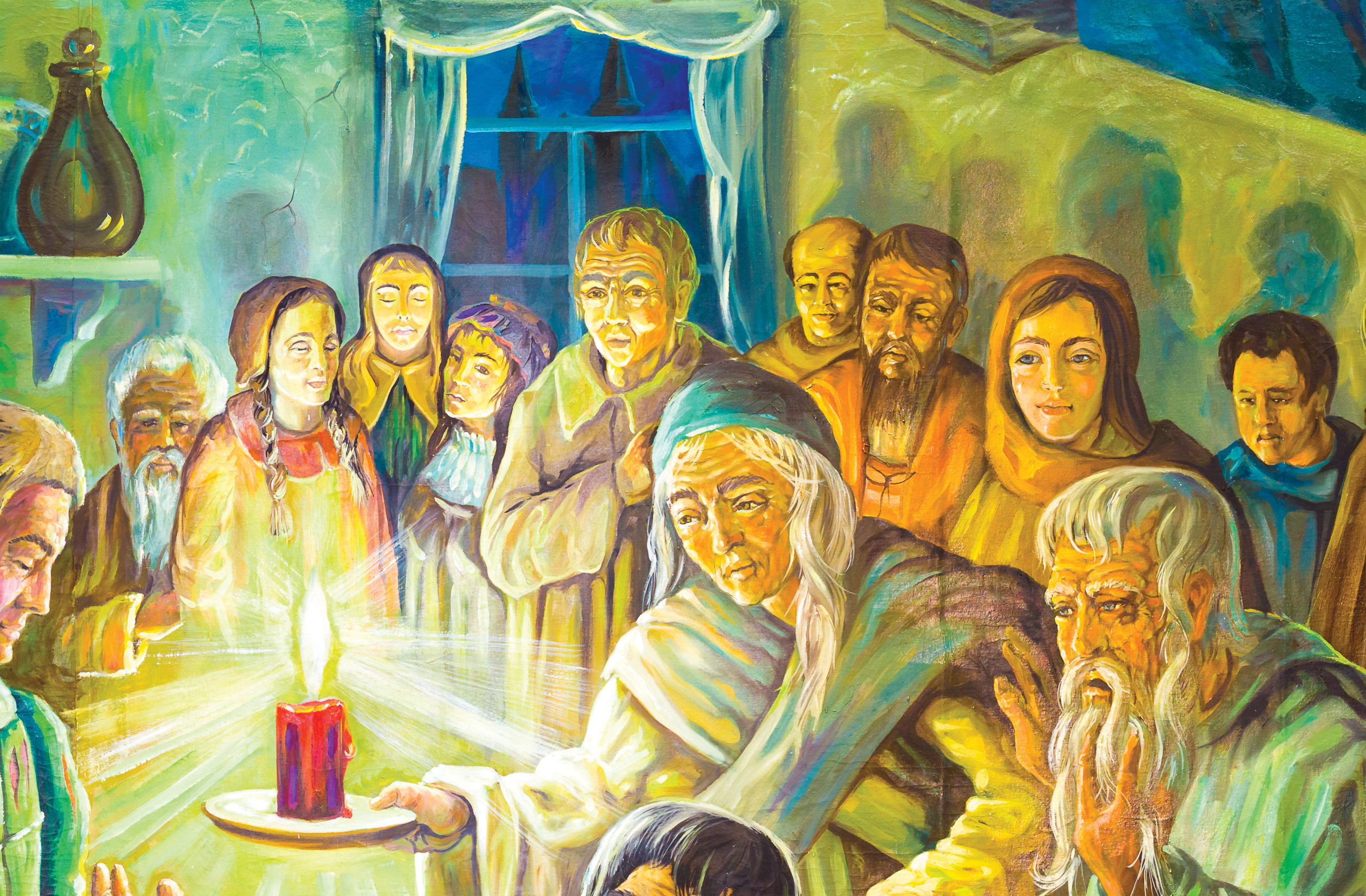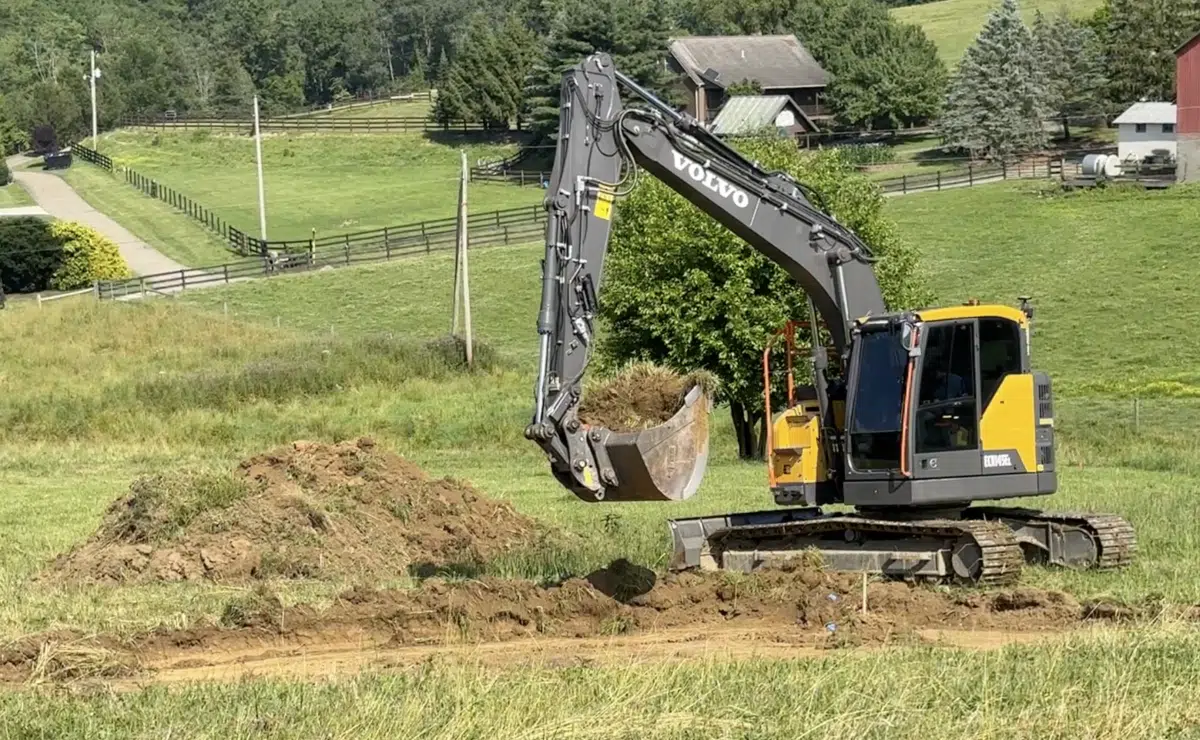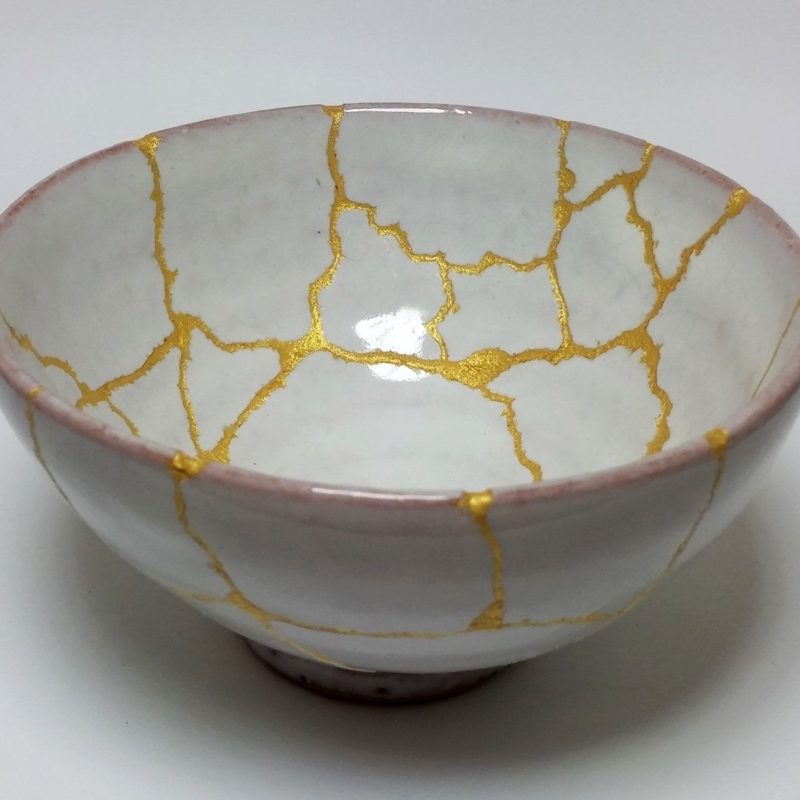words by: Norita Yoder
In times of great change, such as the Reformation, it is not only the leaders but also the common people who share in the excitement. Margret Hottinger and her family were some of those people. A middle-class peasant family in the small village of Zollikon, a suburb of Zurich, their home was at the epicenter of the reforms that swept through Zurich in the early 1520s. As Ulrich Zwingli began to defy the state church, the reading of scripture, Bible studies, the exciting exchange of ideas, and the actions of reform were all encouraged in the Hottinger household. It was here the first Anabaptist congregation developed, with Margret’s father, Jakob, as the Elder.[1] Margret’s family and town stood at the early crossroads of the Anabaptist movement, and it must have been an electrifying environment.[2]
When Martin Luther nailed his ninety-five points on the church door in Wittenberg, Germany, in 1517, it led to times of upheaval and violence. War broke out among the peasants in 1524 over issues such as mandatory tithes and taxes and infant baptism. The conflicts affected their religious beliefs, political structure, trade, and commerce, since all of these were closely intertwined. Systems began to crumble, and the very fabric of people’s lives began to tear apart.[3]
In the tumult that surrounded the first rebaptisms, Margret’s extended family was deeply involved. In fact, thirty-one Hottingers were among those first arrested. Margaret stands out among them, a young girl with deep faith and a zeal that matched her convictions.[4]
Margret came by her zeal honestly, since she was surrounded by examples of courage. Her uncle Claus Hottinger, a close friend and comrade of Conrad Grebel, is named as the first martyr in early Zwinglian reforms. He was a salt merchant and shoemaker living in Zurich.[5] Claus was present at the Ash Wednesday incident in

March 1522, where Zwingli’s followers ate sausage during Lent—an incident viewed as the beginning of the Reformation in Switzerland. His reforming activities culminated in September 1523 when he helped destroy a large crucifix to “sell the materials… and give the money to the poor.”[6] For this, he was banished from Zurich, then arrested in the Catholic city of Lucern. He was martyred on March 9, 1524.[7] Had Claus not been martyred by the time of the first rebaptisms, held less than a year later, he most certainly would have been there, front, center, and active.
Although Claus was martyred as an early Zwinglian reformer, Margret’s father had participated in some of the earliest activities alongside Claus. He was unusual in that he was a lower-class peasant with the ability to both read and write. With the ability to read, Jakob became one of the peasant “readers” who held Bible studies in their homes. From these studies sprang a new idea of “particular brilliance” for Jakob Hottinger. It was “the idea of personal religious freedom and the free church.”[8] The idea of a church separate from the state and the ability to choose faith for oneself was a shining vision that put its early roots down in the little village of Zollikon.[9]
Jakob’s knowledge of Scripture was evidenced in his rebukes of priests and the pulpit disturbances he initiated prior to the first rebaptism. In 1522, Jakob rebuked a visiting priest from Zurich for telling them the communion bread was the actual body of Christ. “This,” he said, “is not true; and you should no longer lie from the chancel.”[10]
He then quoted scripture as proof, which the priest admitted he did not know. Shortly following this, he told (with earthy language) a group in church that, “people have been… deceived with the mass.” The poor and lower class read the Scriptures for the first time in their language, took them to heart, and acted on them. As they began walking up the mountain of Luther’s idea of Sola Scriptura, or “scripture alone,” the climb took them higher than those in authority were willing to go.
On Sunday, January 22, the day after the first rebaptism, we find Conrad Grebel holding the first communion and church service at the home of Jakob Hottinger.[11] Throughout the next week, nightly meetings were held at different homes in Zollikon, and rebaptisms occurred at these meetings. Leaders read the Scriptures, preached, and baptized those who were repentant and wished to listen to “God’s spirit.”[12] On Wednesday, Felix Manz rebaptized Margret’s father. Anabaptism was putting down its first roots to form a church in the village of Zollikon.
In this mix, a Rudolph Hottinger testified that he baptized a young girl who “beseeched him in tears” for baptism.[13] We don’t know precisely when Margaret was baptized, but she states, “When Grebel and Mantz had come to them in Zollikon and read… no one had yet been baptized until Blaurock came; he was the first to begin baptizing.”[14] She says Blaurock baptized her, and we know she and her brothers were baptized sometime before February.[15] Margret’s testimony, like all court testimonies, is but a small window into these events since they revealed the least possible details in court testimony. But Margret was there, one of the women involved at the very beginning.
That we know something of peasant women like Margret is extraordinary, and it is due to their arrests that we are privileged to hear their voices. Yet, we do not hear Margret’s voice until November since, early on, authorities had overlooked women, believing they were insignificant to the movement.
In November of 1525, only ten months after the first rebaptisms were recorded, Margret was arrested, along with others, and charged with rebaptism. The list of those arrested reads like a story of important names in Anabaptism; the group included Conrad Grebel, Felix Manz, George Blaurock, and Michael Sattler. In this prestigious group was Margret Hottinger.[16] Throughout the spring and summer, authorities eventually became aware that women such as Margret were key channels to the river of Anabaptism flowing through Switzerland.
In March, four months after her arrest, the official records of Zurich show she was still imprisoned and noted, “Margret Hottinger… will stay with her baptism, which she holds to be right and good.”[17] She, along with four other women, was sentenced to be “treated in the same way and placed together” with the men in the tower prison and given “nothing more than bread and water to eat, and bedded on straw,” and “thus let them die in the tower.”[18] Of nineteen testimonies, Margret was one of five women who remained steadfast.
After another six months of harsh treatment, Margret allowed that she “had erred” on the question of rebaptism and asked for leniency; “she wishes to be obedient to them [authorities] from now on.” This leniency they generously granted her.[19] But her adult decision to follow Christ proved stronger after her release.
In 1526, Margret appears again in the court records of a nearby city, St. Gall, and here she is once again at the center of activities:
“There arose wild and arrogant error through the women of the Anabaptists, particularly one young woman from Zollikon in the canton of Zurich named Margret Hottinger… who lived a disciplined way of life, so that she was deeply loved and respected by the Anabaptists… she lived an austere life and overcame many obstacles.”[20]
For the next four years we hear nothing of Margret, then, in 1530, she reappears. She and her father were captured near Ravensburg with a group of Anabaptists attempting to flee to Moravia. She was condemned to be drowned for her faith, and her father beheaded.[21] Margret’s story speaks to us of a young girl at the earliest of Anabaptist beginnings. She was willing to struggle and arrive at a deep and abiding faith for which she was willing to live and, eventually, die.

Amish and Mennonite Heritage Center, Berlin, Ohio.
If you wish to hear more historical stories like this, please call or visit the Amish & Mennonite Heritage Center. We offer guided tours of “Behalt” – a 10 ft. x 265 ft. cyclorama oil-on-canvas painting that illustrates the heritage of the Amish and Mennonite people from their Anabaptist beginnings in Zurich, Switzerland, to the present day. Behalt means “to keep” or “remember.” We are open Mon-Sat 9:00-5:00 and are located near Berlin; you can find us at 5798 County Road 77, Millersburg, OH 44654. Please call (330) 893-3192 for more information or to schedule a day or evening group tour.
References:
[1] Blanke, Fritz, Brothers in Christ (Scottdale, PA: Mennonite Publishing House, 1961), 70-71. Qtd. In Harder. Blanke mistakes Jakob as her brother. Later historians Snyder and Huber Hecht say Blank mistook the elder Jakob for Margaret’s younger brother, also named Jakob. This made Margaret Jakob’s daughter and Claus’ niece, rather than their sister. [2] Harder, Leland. Harold S. Bender, Edward Yoder, Ernst Correll. Eds., Elizabeth Horsch Bender. Trans., The Sources of Swiss Anabaptism. (Scottdale, PA: Herald Press, 1985) 548. [3] Williams, George Huntston, The Radical Reformation (Kirksville, MO: Truman State University Press, 2000). [4] Snyder, C. Arnold and Linda A Huebert Hecht, Eds., Profiles of Anabaptist Women (Waterloo, Ontario, Canada: Wilfred Laurier University Press) 44-45. [5] Harder has sources saying that Margret lived in Zurich with Claus prior to his martyrdom. This would put Margret even closer to the very beginnings of activities. Snyder and Hueber Hecht do not address this. [6] Harder, 233 [7] Ibid, 166. [8] Blanke, 70-71. [9] See Blanke and Harder, [10] Qtd. in Snyder and Huebert Hecht, 45-46. [11] Blanke, 23. [12] Ibid, 44 [13] Harder, 548. [14] Harder, 440. Also Qtd. in Snyder and Huebert Hecht, 43-44 [15] Snyder and Huebert Hecht, 47 [16] Harder, 440. Snyder and Huebert Hecht, 47. [17] Harder, 446-447. Qtd. In Snyder and Huebert Hecht, 47. [18] Harder, 445-448. [19] Snyder and Huebert Hecht, 48. [20] Harder, 548. [21] Snyder and Huebert Hecht, 51-52.




